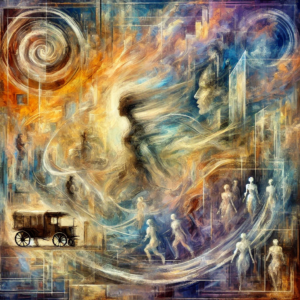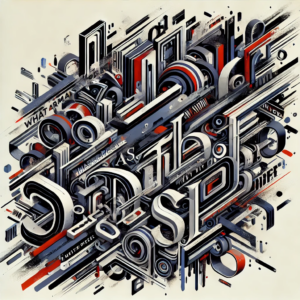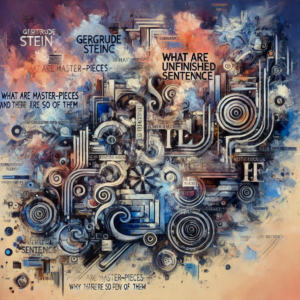Introduction: The Art of Breaking Literary Conventions
Gertrude Stein’s essay on Masterpieces is an essential yet often overlooked piece in literary criticism. Stein, a pioneering modernist writer, is known for her experimental approach to language, which challenges traditional narrative structures and syntax.

Her essay explores what makes a literary work timeless, questioning conventional ideas of structure, clarity, and meaning. If you’re fascinated by avant-garde literature, linguistic experimentation, and the philosophy of writing, Stein’s work offers a radical lens on artistic creation.
Here are some unique aspects of her essay that are rarely discussed:
- Philosophical Depth: Stein’s views on masterpieces are deeply influenced by her interest in cubism, attempting to replicate its fragmented, non-linear perception in prose.
- Timeless vs. Ephemeral Writing: She argues that true masterpieces are not bound by their era but exist in a constant state of presentness.
- Rejection of Traditional Grammar: Unlike conventional literary theorists, Stein believes that syntax and repetition hold more significance than plot or character.
- Influence on Modern Writers: From Hemingway to Beckett, Stein’s radical take on writing has influenced generations of experimental writers.
If you’re interested in literary theory that pushes boundaries, Stein’s essay is a must-read. (Affiliate link here: Buy on Amazon)
Book Details at a Glance
| Feature | Details |
| Title | What Are Masterpieces and Why Are There So Few of Them? |
| Author | Gertrude Stein |
| Publication Year | 1935 |
| Genre | Literary Criticism, Modernist Theory |
| Length | ~20 pages |
| Main Themes | Mastery, Language Experimentation, Perception |
| Key Concept | Writing that resists time and remains ever-present |
| Relevance Today | Postmodernism, Experimental Writing |
| Readability | Challenging, nonlinear, thought-provoking |
| Who Should Read? | Writers, literary theorists, avant-garde enthusiasts |
Breaking Down the Essay: Key Themes & Insights
Stein’s essay is less of a structured argument and more of an artistic meditation on what constitutes a masterpiece. Here are some of the essay’s most striking ideas:
1. The Presentness of Masterpieces
Stein believes that a true masterpiece never feels old, regardless of when it was written. Unlike works that age with their cultural moment, masterpieces exist eternally in the present.

2. Language as an Artistic Medium
Rather than focusing on meaning, Stein’s writing prioritizes sound, rhythm, and structure. She views words as materials for artistic expression, much like a painter uses colors.

3. Repetition as Innovation
One of Stein’s most controversial ideas is that repetition is not redundancy but a form of deeper exploration. She suggests that repetition in writing forces the reader to see things differently each time.

4. The Rarity of Masterpieces
Stein’s title asks why there are so few masterpieces. Her answer? Because writing one requires complete originality, a break from convention so extreme that it often alienates contemporary audiences.
(Want to read more? Get your copy here: Amazon Affiliate Link)
Why This Essay Still Matters Today
Stein’s exploration of what makes a masterpiece remains deeply relevant in modern discussions of literature and art. Her work challenges readers and writers alike to rethink their assumptions about language, storytelling, and artistic permanence.
For those looking to push their creative boundaries, Stein’s essay offers a radical approach to writing and perception.

Final Thoughts & Where to Buy
⭐ Rating: 4.5/5 – A challenging but essential read for anyone interested in literary experimentation and the philosophy of writing.
Expand your understanding of literary art—grab a copy today!
📖 Buy What Are Masterpieces and Why Are There So Few of Them? on Amazon (Affiliate Link)
This post contains affiliate links. If you purchase through these links, I may earn a small commission at no extra cost to you. Thank you for supporting this blog!